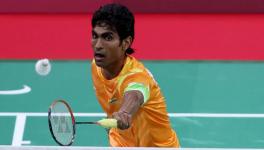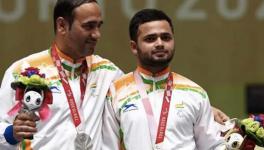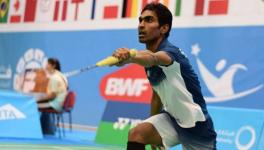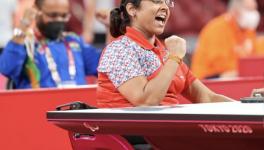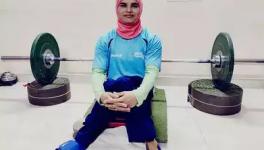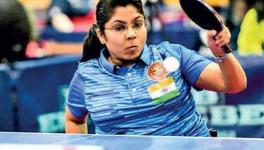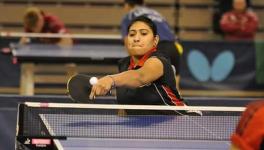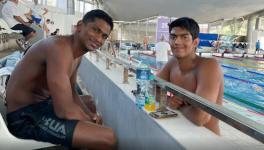Anatomy of a Clutch Shot: Archer Atanu Das’ 10 to Beat Korean Legend Jin-Hyek Oh
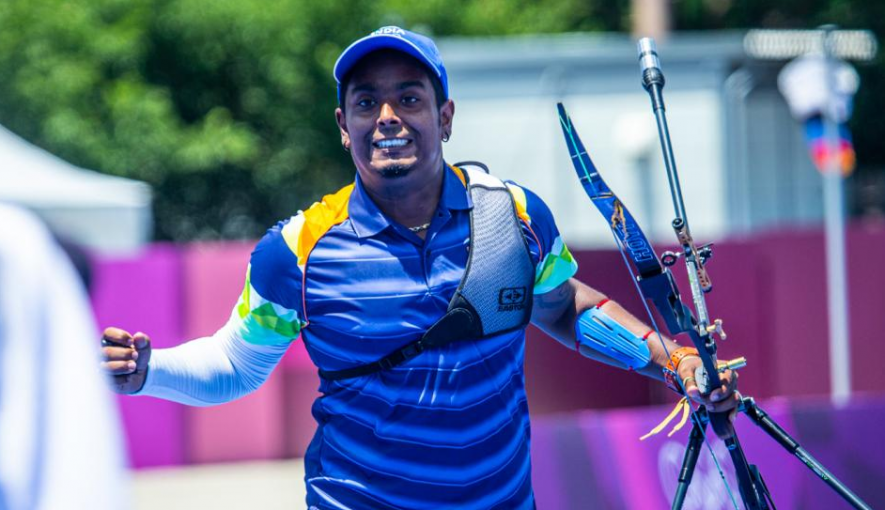
Atanu Das celebrates after beating Jin-Hyek Oh of Korea in the round of 32 of the men’s individual archery event at the Tokyo Olympics (Pic: Archery World).
There is something inherently unjust about the tie-breaker regardless of whether you are on the winning or the losing side. The cruelty of it, the suddenness of it… makes you wonder if we should seriously give everything a rethink: Is it fair for a human rule-maker to institute something as unjustly just as a tie-breaker to pick a winner? When, through the play, destiny and the sporting gods perhaps were sure that the sides should part as equals.
Well, sport is unfair, and so are results because both victory and defeat come with baggage. Sudden deaths are tricky. We may live by it one day, and die of it the next.
And, talking about sudden death tie-breakers, the footballing version is kinder still, and empathetic too. Especially when the comparison made is with archery.
Click | For More Coverage of the Tokyo Olympics From Newsclick Sports
There is nothing more decisive, sudden and unforgiving than the archery shoot-off. A single shot determines the winner. A single shot that, in all fairness, on a normal day, would be governed by many variables including the adrenalin running within the archer, the ever-teasing, ever-changing wind blowing across the venue, muscle fatigue, the voices in the space between the ears, the tension of the string kissing the lips, and the release when all that potential energy takes the arrow to where the archer willed it. But, of course, its trajectory is still governed by the curvature of the earth, the physics of existence, and any sudden gush of wind.
This perhaps should give us a fair bit of idea as to what all fell in place for India’s Atanu Das to overcome Korean legend and multiple Olympic gold medallist Jin-Hyek Oh in their round of 32 match of the men’s individual event in Tokyo.
Archery has introduced a novel heartbeat graphic to the broadcast; a non-intrusive system they were working on for quite a number of years. It turns out to be quite a telling addition for viewers and even though it's only a peek through the door, you get an idea of the state of being of the archer when he or she is shooting the 8, 9s and the 10s.
By the time Das and Oh stepped onto the line to make the shot which would seal their fate at the Tokyo Olympics, adrenalin possibly had a larger say in their physiology. The senior Korean, though, seemed to possess a larger control over his physical parameters at least, his heartbeat hovering steadily around the 125s. In the opening set, Oh’s heart was pounding at the sedate 108-110 range. Das, on the other hand, had a whopping 143-145 to start with. It steadied into the mid 150s through the latter half of the match. It is possible that Das has a higher shooting heart rate since the mid 140s and 150s is where he has averaged out through the Games. He was not showing nerves against Oh either, though it was the round of 32 and the knockouts.
Also Read | India at Tokyo Olympics, Day 6 News Round-up: Sindhu, Men’s Hockey Team in Quarters; Mary Kom Exits and More
And, contrary to popular notion, there has been research (under indoor and controlled conditions of course), which have proven that in a refined environment, heartbeats don’t have a big say in accuracy. Archers, reliant on many things including muscle memory and the feedback they get from the bow, have mechanisms to steady themselves before the release regardless of the pumping rate of their hearts. One way they do it is to take a couple of extra seconds.
Das, in his final shot, took that extra bit of time. Restraint. Patience. Das waited… waited like an archer waiting for a general’s command. He was in control and took a good four seconds more than the average time he was using to make his shot through the match. An archer gets 20 seconds to shoot. Das took around nine to 11 seconds before releasing his arrow through the match. In the shoot-off, he let go after the 13-second mark. The three-second differential is not much, we would imagine. But at that point, with the tension palpable, it seemed an eternity. There was no flinching, the kind he showed when shooting a couple of 8s earlier. A minor wobble and then it was released. A 10 to overcome a steady and strong nine the Korean had shot 15 seconds earlier.
The heartbeat graphic for Das read 152, very close to the average he had in the second half of the match when he staged a comeback after conceding the first set to the Korean. Oh’s heartbeat in the shoot-off was 133, slightly above the average of the second half of the match.
Also Read | Misfiring Guns and Booming Loose Cannons: The Burden of Being an Indian Shooter in Tokyo
The precision by which archers go about their business is quite stunning. When we look at another parameter governed by the laws of physics — the velocity of the arrow, the Korean’s arrows had a faster trajectory. It was steady at 199-200 kmph through the match. Das’ was 195-196. No change. It remained exactly the same through the five sets and the shoot-off. This despite the fact that the wind velocity was unsteady, though blowing more-or-less in the same direction — left to right across the venue.
That velocity differential between the two has nothing to do with quality though. It is governed by their technique and their comfort release tensions. The reason why archers kiss the bow string is to ensure that the head and shoulder position and angles, as well as the release tension are what they want them to be. They have to kiss the string, archers joke, before hitting bullseye. And Das kissed it right Thursday.
In a matter of 40 seconds, the match was over, with the Indian camp jubilant. Disappointment was apparent on the Korean side. They have had an underwhelming show in the men’s individual event, after winning all the three gold medals that were on offer so far — in the team competitions.
Also Read | Olympian Lovlina Borgohain and Assam Boxing’s Sudden Revelation
India, on the contrary, had a quite a wobbly outing in the team events. With Das in pre-quarters, and Deepika in the quarterfinals on Friday, the Indian camp is seeking redemption, and also trying to bury the recurrent ghosts of underperformance on the big stage.
And maybe, just maybe, the shoot-off victory over a legend of the sport, is what was needed to give the Indians that mental edge and the confidence to control the variables they actually can — the heartbeats, the adrenalin, the release tension, the speed of the arrow, and the feel of the shot. Let the wind, the elements and destiny work the rest.
Get the latest reports & analysis with people's perspective on Protests, movements & deep analytical videos, discussions of the current affairs in your Telegram app. Subscribe to NewsClick's Telegram channel & get Real-Time updates on stories, as they get published on our website.










